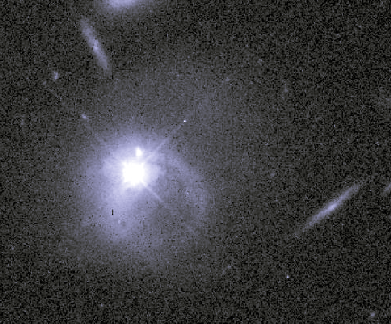Astronomy Picture of the Day
Discover the cosmos! Each day we feature a different image or photograph of our fascinating universe, along with a brief explanation written by a professional astronomer.
October 22, 1995

A Quasar - Galaxy Collision?
Credit:
NASA,
HST,
John Bahcall, Institute for Advanced Study.


